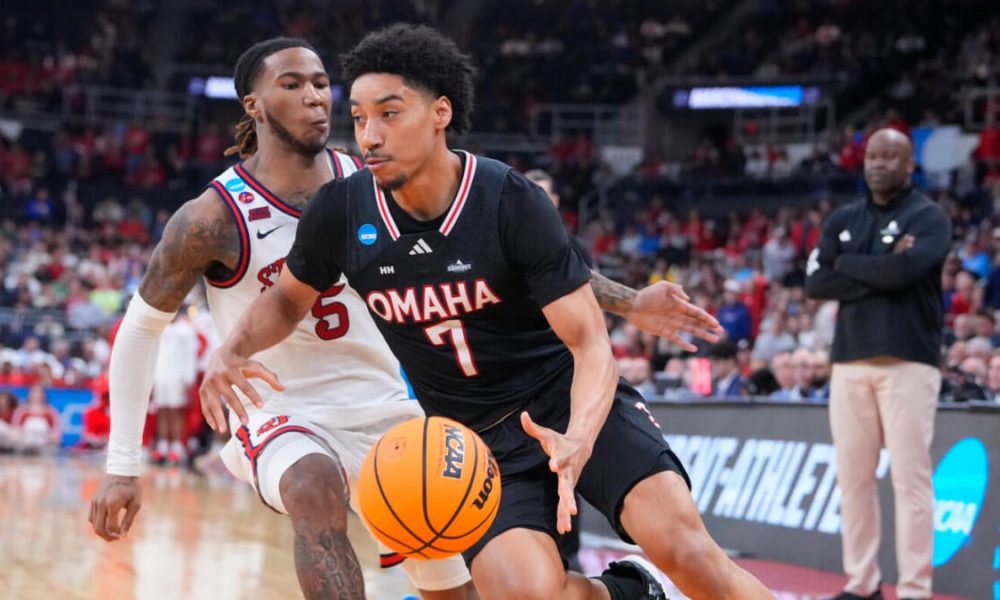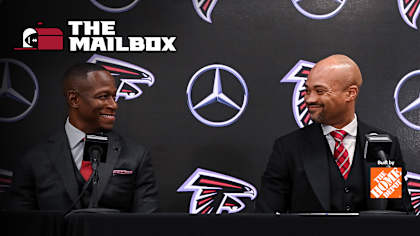NIL
What does NIL really mean for college athletics?


| Mark Sherrill |
In five to 10 years, I predict:
• Division II and III programs will struggle to survive.
The good: Opportunity for generational wealth
Mark Sherrill is former head basketball coach at Fort Valley State and former assistant coach at Johnson C. Smith, where he earned All-American and All-CIAA accolades as a player.
3. Work hard: Discipline and effort will always outlast quick money. The NIL era is here, and it’s an exciting time. But let’s not lose sight of what truly matters—education, relationships, and preparing for life after the game.
• The NCAA may cease to exist as power programs move toward corporate governance.
• Relationships redefined: For many coaches, the recruiting process has become transactional. Instead of focusing on development or relationships, the first question athletes often ask is, “What kind of bag are you offering?”
• Academics take a backseat: Imagine a high school athlete receiving a million-dollar NIL deal to play at a college. Are we really going to fail them for skipping class? Why should academics matter when the money is rolling in?

NIL refers to the rights of college athletes to control and profit from their name, image, and likeness. For decades, these rights were restricted by the NCAA, which prevented athletes from monetizing their personal brands.
The broader implications
If we think the NCAA was exploiting athletes, consider this: The corporate world operates in a similar way. Many people work hard, making their companies millions while barely making ends meet. Life isn’t always fair, and promotions come from effort, not entitlement.
Similarly, not all athletes who receive big NIL deals will be prepared for the realities of life after sports. Many will burn through their money, lose the discipline to work hard, and face challenges when the checks stop coming.
Looking ahead: A fragile future
• Smaller schools must start building endowments to keep their sports programs alive.
Let me be clear: I’m thrilled for today’s athletes who have the chance to secure life-changing wealth while still in college. In some cases, this money could transform families and create opportunities that extend well beyond sports. But this newfound financial freedom comes with challenges.
1. Invest wisely: Get a financial planner to help secure your future.
However, recent policy changes now allow athletes to earn money from endorsements, appearances, and other opportunities—all while playing college sports.
A word of advice for athletes
NIL has shifted the focus of college sports in ways we may not yet fully understand. The question is: What does this mean for the future of college athletics, academics, and the athletes themselves? The challenges: Sustainability, values, and long-term impact.
2. Think long-term: Avoid wasting money on fleeting luxuries.
College athletics is undergoing a seismic shift. While I’m happy for the athletes receiving life-changing opportunities, we must approach this era with caution, wisdom, and a plan for sustainability. Let’s keep hope alive but stay vigilant about the road ahead.
• Unequal opportunities: Not every athlete gets paid. Many dream of transferring to larger programs to secure their piece of the pie, leaving smaller schools and programs struggling to keep up.
Closing thought
This NIL agreement is, in my opinion, a ticking time bomb. Why? Because it fundamentally alters the purpose and priorities of college sports.
To the athletes fortunate enough to secure NIL deals:
Comments
NIL
CBS Sports ranks Top-25 transfer players in College Football Playoff

One aspect of the offseason that affects teams and contenders every single year now is the NCAA Transfer Portal. Now, ahead of the College Football Playoff, we can see how some of those additions panned out for programs that made the field based on a recent ranking done by those at CBS Sports.
In an article from Friday, CBS Sports rated the Top-25 transfers across the dozen teams who will be in the CFP. Of them all, Oregon led the way with four names on this list, which tracks as they finished fourth last offseason in On3’s 2025 Team Transfer Portal Rankings. Five other teams then had three apiece, with all of them finishing in the Top-20, including two in the top-five and the one who was ranked as the best portal class in the nation, per that same rating from On3.
And, of the fifteen of them who transferred this last offseason, eleven of them were in the Top-100, including six who were in the Top-10, of On3’s Industry Ranking of 2025’s Top Transfer Portal Players. Ten were then in the Top-10 of their respective position, four of those being the top overall player at their position, in that rating from On3.
Needless to say, players like these are what make this next part of the year so important, with the one-time portal window set to open on January 2nd. Before we get to that part of the calendar, though, let’s take a look at these past transfers who could end up helping a team win a national title this season, as rated by CBS Sports:
Even in two days of hindsight, this ranking at number one looks even more spot on. That’s as, as of last night, Mendoza, the quarterback of the top-seeded team in the country in the Hoosiers, won the Heisman Trophy, as the first winner of the award in program history up in Bloomington.
A transfer from California, who was the No. 12 overall player and the No. 4 QB in the portal per On3, in his first season with IU, Mendoza has been one of the best quarterbacks in the country with a career season at 71.5% completion for 2,980 yards, a national best of 33 touchdowns, and six interceptions, while also rushing for 240 yards and six more scores. Now, after leading them to an undefeated record and a Big Ten Championship, and after hosting the Heisman last night in NYC, Mendoza will lead Indiana, the No. 1 overall seed, into the field in hopes of making more history in the CFP.

Texas Tech, which had the No. 1 overall class in the portal per On3, had three names on this list just from their defense. Bailey leads that, after being a top-ten overall transfer and the second-best defensive end in the portal at On3, with what he did this season in Lubbock.
Transferring in from Stanford, Bailey had a career-best season with 43 total tackles, with 17.5 being for loss with 13.5 sacks, three forced fumbles with one recovery, and a deflection for the Red Raiders. Production like that is a big part of Texas Tech, with them posting a top-five overall defense, having the best season in school history at 12-1, winning the Big 12 Championship, and making their debut in the CFP.
Downs has been impactful at Ohio State since his transfer two offseasons ago from Alabama. He now may be part of a national title winner, with the Buckeyes having a chance to go back-to-back in the College Football Playoff.
As an anchor on the backend of their defense, being one of the best players in all of college football, Downs, who received Heisman votes as a safety as well as won the Thorpe Award, has had 60 more tackles, 5.0 being for loss with one sack, with two interceptions and two deflections. That has been part of what has led the top overall defense in the country this season, as Ohio State enters as just a one-loss team to be the No. 2 overall seed in the CFP.
Sayin did the exact same thing as Downs, as he transferred two offseasons ago from Alabama, after signing there before the retirement of Nick Saban, to Ohio State. This was his first season as the starter, though, and it has been quite the year he had in Columbus.
Sayin posted a national best in completion rate, and one of the highest all-time, at 78.4% en route to 3,323 yards, 31 touchdowns, and six interceptions for the Buckeyes, which also had him as a finalist last night for the Heisman Trophy. Now, on one of the best teams in the country, Sayin will attempt to lead Ohio State to a second consecutive national title in the College Football Playoff.

After starting as a freshman at UCLA, Moore transferred two offseasons ago and sat as the backup last year at Oregon. Now, a year later as the starter, that decision has paid off with what he did in Eugene, as he rounds out the top-five here for CBS.
Moore posted 72.5% completion for 2,733 yards, 24 touchdowns, and six interceptions for a top-fifteen offense this season for the Ducks. He’ll now lead Oregon, in a very favorable position as the first of the non-bye teams at No. 5 overall, into what could be run of retribution for them after what happened last year in the CFP.
Texas A&M was one of the best defenses in the nation this year when it came to pressures and tackles for loss. Howell was then the biggest part of that effort in what was his second season in College Station after originally transferring from Bowling Green.
Howell posted the best campaign of his career this year with the Aggies with 29 tackles, 14.0 of those being for loss with 11.5 sacks, along with six deflections and one forced fumble. He’ll now look to continue wreaking the same havoc in the playoff, with A&M set to open up with a home game at Kyle Field.
After the first two weeks of the season, one name that wasn’t expected to be on a list like this would be Chambliss. However, with the play as well as an injury to QB Austin Simmons, Chambliss took full advantage of the opportunity that came his way this year in Oxford after transferring to be a backup from out of Ferris State (DII)
Chambliss, a Top-40 QB in the portal last offseason per On3, went on to post a total of 290.5 total yards per game and 24 touchdowns overall, with 3,016 yards and 18 touchdowns coming as a passer at 65.5% completion, for the Rebels. He’ll now look to keep their offense humming, despite the coaching changes the past two weeks, in what’ll be their debut appearance in the playoff in the ‘Sip.
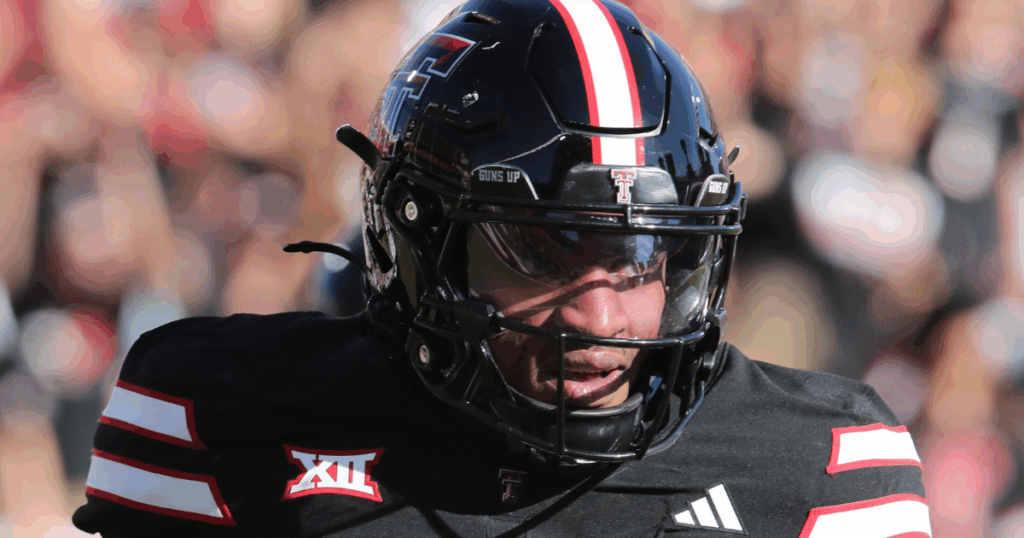
Going back to the defense for the Red Raiders, Height is another defensive end that’s had a great first season in Lubbock. That’s after transferring in last offseason, after being a top-fifty player in the portal and in the top-ten among edges at On3, from Georgia Tech, after beginning his career with two seasons apiece at USC and Auburn.
On that same unit, Height posted some career-best numbers of 33 total tackles, 10.5 being for loss with 9.0 sacks, to go with two forced fumbles, with a recovery, as well as a deflection. That has two pass rushers in the top-ten here at CBS for Texas Tech, who hopes to see both keep causing those kinds of problems for their eventual opponents in the CFP.
Oregon was seen to have one of the better offensive lines in the country this season. A major piece of that was Pregnon, who was a top-thirty overall transfer and the second-best interior lineman after two seasons apiece at USC as well as Wyoming.
Pregnon did not allow a sack this season as part of that line. And, behind him, the Ducks had a top-fifteen total offense at 38.2 points and 246.8 yards per game, with them hoping to have the same output in this appearance in the CFP.
Concepcion was already one of the better wide receivers in college football after his first stop with two years spent at NC State. He then, after being a top-ten overall transfer and the second-best receiver in the portal per On3, was even better this fall for Texas A&M.
Concepcion was the leading pass catcher for the Aggies this season with 57 receptions for 886 yards, averaging 73.8 per game and 15.5 a catch, and nine touchdowns. He, along with their second-leading receiver not too much further down this ranking, will now try to be just as explosive in the pass game as A&M prepares to debut in the College Football Playoff.
11. Miami DE Akheem Mesidor
12. Ole Miss RB Kewan Lacy
13. Texas Tech DT Lee Hunter
14. Oregon DB Dillon Thieneman
15. Oregon OT Isaiah World
16. Indiana LB Aiden Fisher
17. Miami DB Jakobe Thomas
18. Texas A&M WR Mario Craver
19. Georgia WR Zachariah Branch
20. Miami QB Carson Beck
21. Alabama WR Germie Bernard
22. Ohio State CB Davison Igbinosun
23. Oklahoma WR Isaiah Sategna
24. Indiana CB D’Angelo Ponds
25. Tulane QB Jake Retzlaff
NIL
$87 million college football coach comments on rumor he’s leaving for Big Ten team

Following a 2025 season full of coaching changes, one of the biggest gigs in the game still remains open. The Michigan Wolverine football program fired head coach Sherrone Moore after two seasons at the helm after he took over for Jim Harbaugh, leaving the team in need of a need coach for the second time in three years.
What’s tricky for Michigan is the timeline. Since Moore’s firing was credited to non-football reasons and came at an abrupt moment, the Wolverines are hopping on the carousel after everyone else already has a seat. Lane Kiffin made his big move, the SEC had half-a-dozen teams total make a coaching swap, and even Penn State, a conference rival for Michigan, finally found a solid fit in Iowa State’s Matt Campbell.
But that doesn’t mean the Wolverines’ leadership won’t aim high. They reportedly had the head coach of Alabama, Kalen DeBoer, as one of their options at the outset of the search. Even prediction markets like Kalshi reflected a sentiment that DeBoer would be in the mix in Ann Arbor. At least, that’s if he wanted to be.

As of Sunday evening, Alabama fans can rest easy knowing their second-year head coach is all the way painted in Crimson from head to toe and ready for a big postseason run. After speculation had bubbled to the social media streets, DeBoer shut it down with the following statement:
“My family and I are very happy in Tuscaloosa and remain extremely grateful for the support of President (Peter) Mohler, Greg Byrne, the Board, and so many others,” DeBoer said, according to Yea Alabama, the school’s official fan experience page. “We have an incredible opportunity in front of us, so my sole focus is on Alabama football and our preparations to play Oklahoma in the College Football Playoff.”
Kalen DeBoer, Alabama working on extension to $87 million contract
If a statement wasn’t enough to convince fans of his loyalty and Alabama’s as well, the two sides are reportedly entered in contract extension talks, according to On3’s college football insiders, Chris Low and
“Kalen DeBoer and Alabama are in ongoing talks about an extension, but nothing has been agreed upon or signed,” On3 posted on X Sunday evening. DeBoer is already signed for quite a while Ahead of his first season, 2024, DeBoer arrived from the West Coast and inked a deal worth $87 million over eight seasons. He’d still have six more years left on that contract after wrapping up this College Football Playoff run.
However, as has been the case for many coaches mentioned in rumors for other jobs, the schools may just want to re-sign another deal to signal to fans that no, their man is not going anywhere for now.
More on College Football HQ
NIL
Dick Vitale, Charles Barkley call out College Football Playoff committee over Notre Dame snub

Six days after Notre Dame missed the College Football Playoff, the Fighting Irish’s absence is still a point of conversation. During Saturday’s Kentucky vs. Indiana basketball game, Dick Vitale and Charles Barkley shared their reaction, calling out the CFP committee in the process.
Vitale, of course, wears his Notre Dame fandom proudly. He spoke out on social media shortly after the final rankings came out this week, when the Fighting Irish became the first team out of the CFP while Miami jumped up to No. 10 due to the head-to-head matchup between the two teams.
As ESPN showed a promo for this year’s College Football Playoff, Vitale made his thoughts clear. He argued Notre Dame deserved to be in the bracket, especially considering the Irish were in that position throughout the five weeks of CFP rankings shows.
“I’m so frustrated looking at that, Notre Dame not in there,” Vitale said on the broadcast. “Notre Dame deserved to be in.
“Five weeks in a row, we have a show on ESPN where we give the Top 12 teams, make a big thing out of it every Tuesday. Big show. Here comes the committee. Bottom line is, they were all five [weeks] in the Top 12. Then, all of a sudden, bumped.”
Charles Barkley: ‘You could see’ Notre Dame absence coming
Charles Barkley agreed with Dick Vitale, expressing his disappointment with Notre Dame’s absence. However, he said it might not have been entirely surprising considering the penultimate rankings announcement. The Fighting Irish dropped to No. 10 while Alabama moved to No. 9. BYU sat at No. 11, putting a team between Notre Dame and Miami, therefore avoiding the head-to-head discussion.
That said, Barkley argued Notre Dame is a different team than it was when it played Miami in Week 1. As a result, he thought the Irish should have been in the field.
“I actually agree with you. … I was disappointed,” Barkley said. “But you could see it coming in the last couple polls. They were creeping up on Miami. And my biggest problem with the whole thing, everybody’s talked about head-to-head. First of all, that was in August. … They were very close games [against] A&M and at Miami.
“But your team is not the same in August as it is in December. Notre Dame is playing as well as anybody in the country other than Indiana and probably Ohio State. And I don’t want to leave out the [Georgia] Bulldogs. Kirby Smart, that man can really coach.”
NIL
2026 Heisman Trophy: CBS Sports names front-runners for the college football’s top award

The 2025 Heisman Trophy race is in the books, and now the college football world can turn its attention to the 2026 Heisman Trophy race. There, it should be a highly competitive race with several players set to return who look like candidates for college football’s top award.
Ahead of the 2026 season, CBS Sports took a look at those candidates. That included sorting them into two categories. That’s the top Heisman contenders for the 2026 season and other names to know for the race. Of course, there’s plenty of room for surprises beyond that too.
Several players who CBS Sports lists could be on the move next season. That includes in the Transfer Portal or going into the NFL Draft. So, with the offseason just around the corner, there’s time for things to change.
Top Heisman contenders in 2026
Arch Manning, QB, Texas Longhorns
Texas Longhorns quarterback Arch Manning got his first action as a starter in 2025. That moment had been highly anticipated since he was in high school and it came with mixed results. Still, with another year of experience, he very well could contend for the Heisman Trophy.
Of course, Manning does have the option to enter the NFL Draft. That’s not what most people anticipate, though, as returning to Texas for another season should help him improve that stock. Certainly, being a Heisman winner wouldn’t hurt either.
Julian Sayin, QB, Ohio State Buckeyes
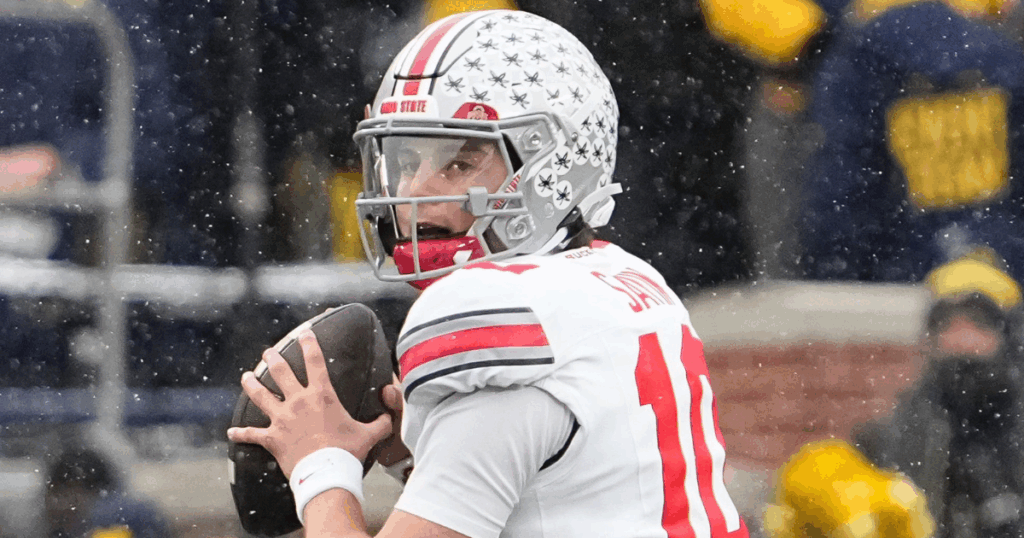
It was a disappointment in New York for Ohio State quarterback Julian Sayin. A Heisman finalist this season, he didn’t end up going home with the hardware. Instead, he’ll have to refocus on the College Football Playoff and winning on the field.
As a redshirt freshman, Sayin was a Heisman finalist. He’ll be back again in 2026 with added experience that is almost impossible to find in college football. So, there’s no reason why he can’t win.
Jeremiah Smith, WR, Ohio State Buckeyes
Coming into the 2025 season, Jeremiah Smith was commonly thought of as the best receiver in all of college football. He wouldn’t end up winning the Biletnikoff Award or being a Heisman finalist, though he was still thought of as the most talented receiver in the country.
Just a sophomore, Smith will be back next season and will, once again, be among the most thrilling players in the game. The only concern is whether or not he and Sayin will steal Heisman votes from one another.
Marcel Reed, QB, Texas A&M Aggies
Marcel Reed has been a revelation at quarterback for Texas A&M. The Aggies’ signal caller led Texas A&M to the College Football Playoff and has made them a legitimate threat to win the national championship. He’d use both his arm and legs to get there too.
As one of the most exciting players in the game who plays on a massive stage in the SEC, Reed is going to have the spotlight on him in 2026. If he plays up to his capability, he’ll be in the Heisman conversation once again. There’s no reason to think he can’t win it too.
Jayden Maiava, QB, USC Trojans
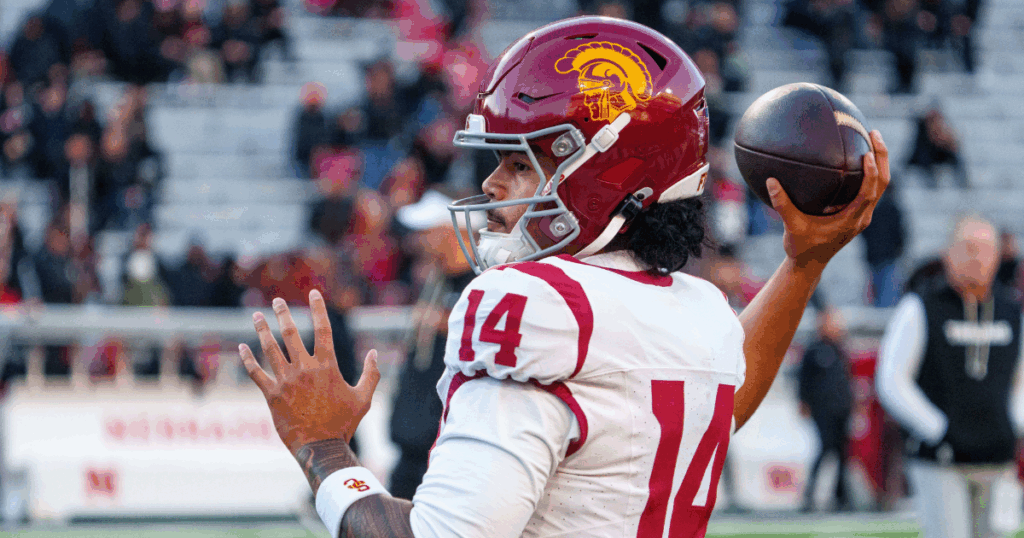
After taking over as the USC starter late in 2024, Jayden Maiava would hit his stride in 2025. Now, he and head coach Lincoln Riley are looking for a way to build on that once again.
If there is one thing that Lincoln Riley has found success doing it’s developing quarterbacks and explosive offenses. That’s led to Heisman Trophy success, including at USC. So, it’s not unfair to have high expectations for next season.
Other names to know
Ty Simpson, QB Alabama Crimson Tide
Alabama quarterback Ty Simpson is eligible to turn his attention to the NFL Draft next season. If he chooses to return to college, though, Simpson is going to be viewed as one of the best quarterbacks in the entire sport. He could very well even be a Heisman contender.
Gunner Stockton, QB, Georgia Bulldogs
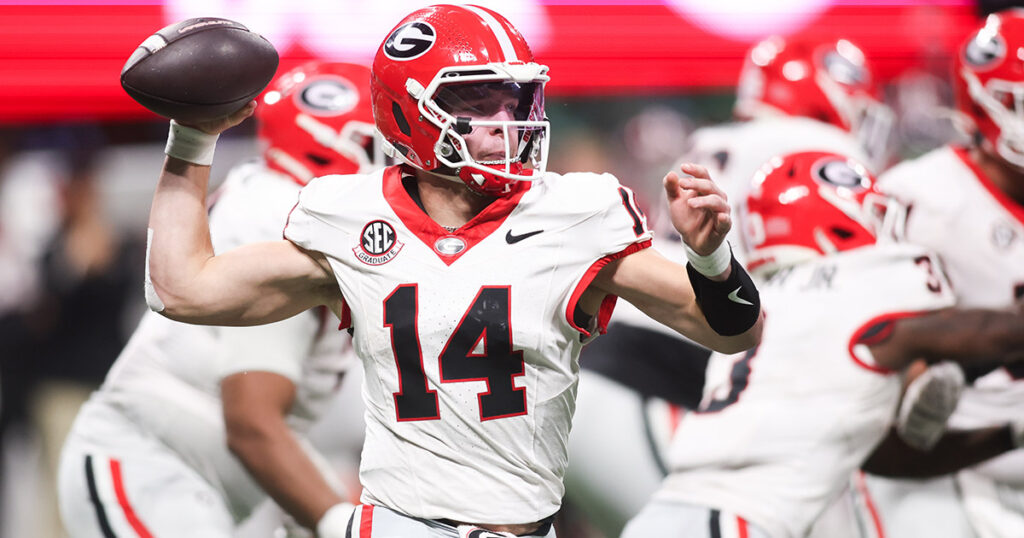
Georgia managed to win the SEC and a first round bye in the first season Gunner Stockton led the Bulldogs as their starting quarterback. He’ll likely be back next season with much higher expectations from the jump. So, he could feasibly end up in the Heisman race more so than he was in 2025.
Drew Mestemaker, QB, North Texas Mean Green
There is a chance that Drew Mestemaker could be a transfer this offseason, as his head coach is on his way to Oklahoma State. That comes after the pair combined for a phenomenal season at the Group of Five level. With more attention on him from the start, regardless of where he’s playing, the Heisman isn’t out of the question.
Sam Leavitt, QB, Arizona State Sun Devils
For the past two seasons, Sam Leavitt has been vital to making Arizona State one of the best teams in the Big 12. Now, there are rumblings that he could transfer. Regardless of where he ends up, Leavitt should be a Heisman contender.
Ahmad Hardy, RB, Missouri Tigers
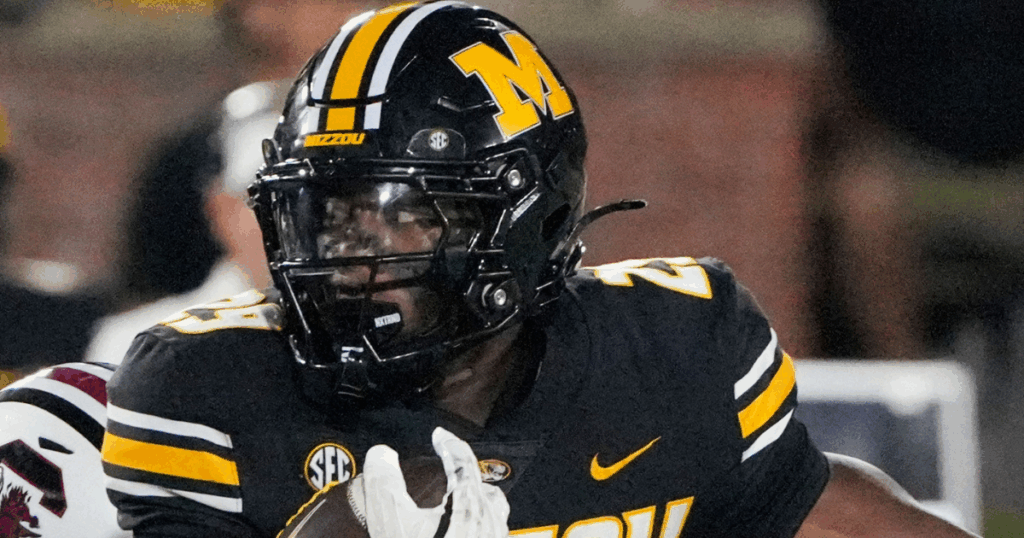
The Missouri Tigers managed to find one of the best running backs in the entire country this season, bringing in Ahmad Hardy. He’d rush for 1,560 yards and 16 touchdowns in 2025. If he can build on that in 2026, the Heisman may not be able to ignore his success.
Kewan Lacy, RB, Ole Miss Rebels
Another running back to keep an eye out on for the Heisman race next season is Kewan Lacy. The Ole Miss running back had 20 rushing touchdowns this year. That’s hard to ignore, but it’s also hard to replicate.
NIL
Dan Lanning Reveals Reasoning Behind His Loyalty to Oregon
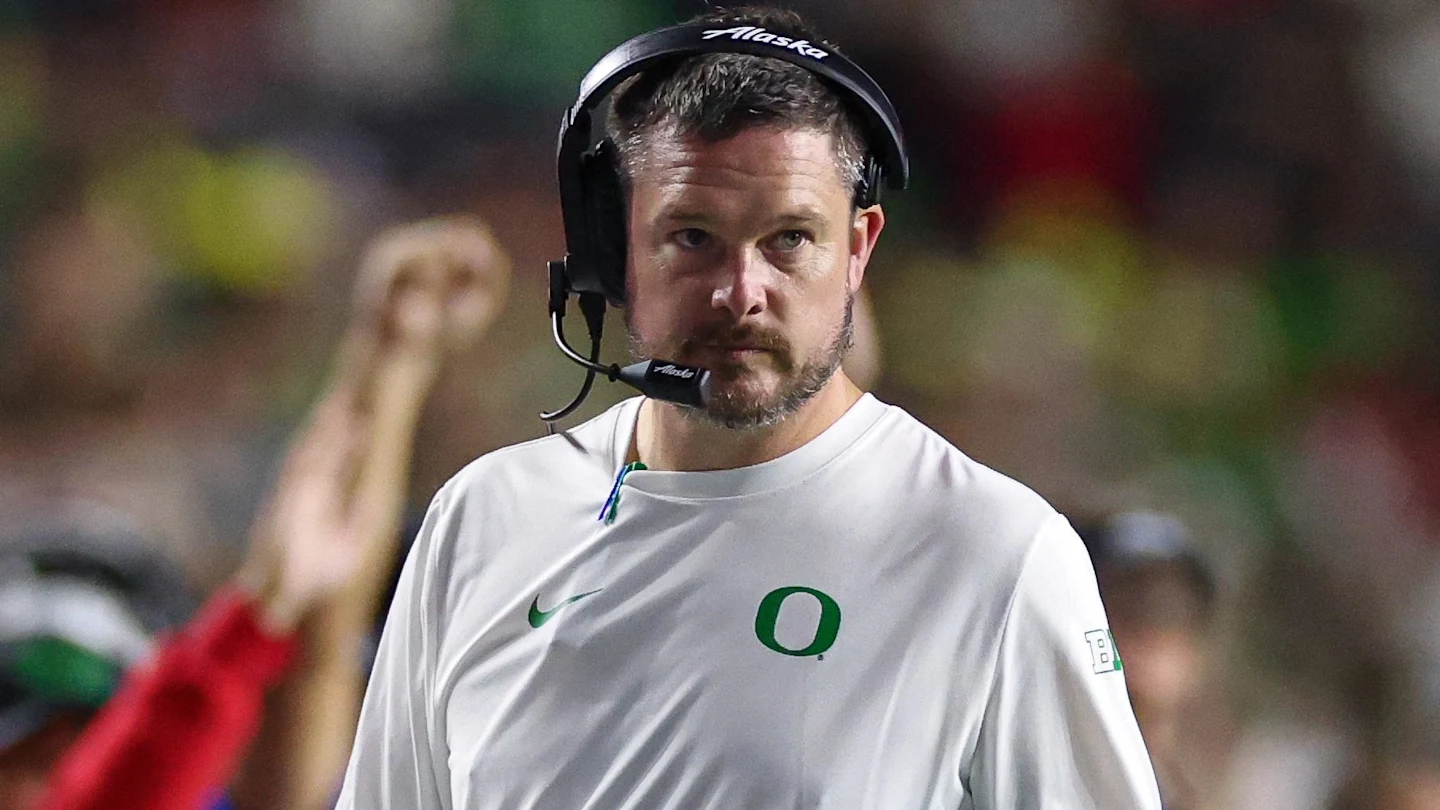
Dan Lanning has been asked many times since 2022 if he’d leave the Oregon Ducks for another head coaching job. While rumors have swirled pertaining to college football openings, a position in the NFL is something that could’ve lured Lanning away from Eugene in the past.
But the Ducks’ coach revealed on The Inner Circle Podcast that his former aspiration of coaching at the professional level is old news.
Dan Lanning Remains Committed to Oregon

Lanning spoke about how he started writing his career goals on his mirror when he was at Arizona State.
“I still put my goals on my mirror,” he said. “No. 1 best father on staff, best husband on staff, man of integrity, Christian, five recruits.”
Lanning, who was a graduate assistant for the Sun Devils, wanted to become a full-time employee. He checked that off the list by getting hired as the on campus recruiting coordinator.

“My next goal on there was head coach, 35. I thought that was really important to me,” Lanning said. “Well, I became the head coach at Oregon at 35. Next goal on there is NFL coach. That ain’t on my goal board no more. It’s off my board. It’ll never be up there again like that.”
Oregon hired Lanning as its football head coach on December 11, 2021, after he won as National Championship as the Georgia Bulldogs defensive coordinator. He’s quickly made a name for himself as one of the top young college football coaches.

Despite Lanning’s name getting thrown around as a candidate for vacancies like Alabama in 2024 or LSU in 2025, he’s remained vocal that Eugene is where he wants to be.
“I truly believe this will be my last job,” Lanning said. “The secret to that is I gotta win. Now do I coach as long as Nick Saban did? I don’t know about that.”
MORE: Weather Concerns Begin For Oregon’s Playoff Game vs. James Madison
MORE: Three Reasons Why Oregon Could Be The Most Dangerous Playoff Team
MORE: Oregon Ducks Projected to Make Program History In 2026 NFL Draft
SIGN UP FOR OUR NEWSLETTER HERE!
Dan Lanning Opens Up About Finishing His Career at Oregon
Staying with the Ducks seems to have additional meaning for Lanning beyond just his loyalty to the program. He said his family plays a major role in why he wouldn’t take an NFL job.
“It used to be a dream, but dreams can change,” Lanning said. “When we took this job, two of my kids had lived in eight states. And you realize, dang, like is that fair to them?”
“So, we took this job, I made a promise to my kids that you’re going to graduate from the same high school. You’re going to graduate from the same middle school,” he continued. “Like, those things are way more important to me than getting the opportunity to coach in the NFL.”

Lanning coached at six different schools from 2011 to 2021 before taking the job at Oregon. He’s coached the Ducks to a second consecutive College Football Playoff this season.
No Oregon head coach has spent more than five full seasons with the program since Mike Bellotti coached from 1995 to 2008. Lanning can change that in 2026.
NIL
Adidas releases tribute to Indiana QB Fernando Mendoza after winning Heisman Trophy

As Fernando Mendoza put the finishing touches on a Heisman Trophy-winning season, he signed an NIL deal with adidas. Shortly after he won college football’s highest honor, the brand paid tribute.
Adidas released a video honoring Mendoza after he won the Heisman on Saturday night. The brand paid homage to his viral quote following the Big Ten Championship when the IU quarterback told FOX Sports’ Jenny Taft, “The Hoosiers are flippin’ champs.”
SUBSCRIBE to the On3 NIL and Sports Business Newsletter
Throughout the year, Mendoza not only became one of the biggest stars on the field, but one of the top names in the sport. He has a $2.6 million On3 NIL Valuation as Indiana soon prepares for the College Football Playoff as the No. 1 seed.
Just before IU took on Ohio State in Indianapolis, Mendoza announced his high-profile NIL deal with adidas. He is the latest college football star to partner with the Three Stripes, joining Ohio State receiver Jeremiah Smith and Nebraska quarterback Dylan Raiola, among others.
“Excited to share that I’ve accepted an opportunity to join adidas!” Mendoza wrote in a LinkedIn post. “I’m very grateful for everyone who has supported me along the way and excited to bring my passion for sport, leadership, and work ethic to the Three Stripes. Let’s get to work.”
More on Fernando Mendoza’s Heisman season
Mendoza led the nation with 33 touchdown passes this year while completing 71.5% of his passes for 2,980 yards, to just six interceptions. Additionally, his $2.6 million On3 NIL Valuation ranks No. 5 in college football and No. 7 in the On3 NIL 100, the first of its kind and defacto NIL ranking of the top 100 high school and college athletes ranked by their On3 NIL Valuation.
Fernando Mendoza beat out Vanderbilt quarterback Diego Pavia for the award, garnering 643 first-place votes and 2,362 points. Pavia got 189 first-place votes and 1,435 points. It’s the latest chapter in a special season for the former Cal star, who helped lead Indiana to its first outright Big Ten title since 1945.
After the announcement, Mendoza delivered a passionate speech. As he wrapped, he had a message for young athletes who think they’re not getting enough attention or are ranked high enough.
“The truth is, you don’t need the most stars, hype or rankings,” Mendoza said. “You just need discipline, heart and people who believe in you. And you need to believe in your own abilities. I hope this moment shows you that chasing your dreams are worth it, no matter how big or impossible they seem.”
-

 Rec Sports3 weeks ago
Rec Sports3 weeks agoFargo girl, 13, dies after collapsing during school basketball game – Grand Forks Herald
-

 Motorsports3 weeks ago
Motorsports3 weeks agoCPG Brands Like Allegra Are Betting on F1 for the First Time
-

 Sports3 weeks ago
Sports3 weeks agoTwo Pro Volleyball Leagues Serve Up Plans for Minnesota Teams
-

 Sports3 weeks ago
Sports3 weeks agoUtah State Announces 2025-26 Indoor Track & Field Schedule
-
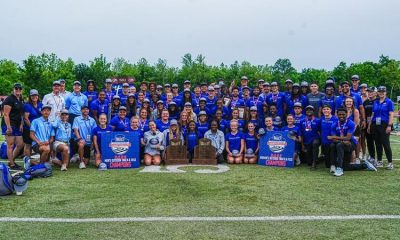
 Sports3 weeks ago
Sports3 weeks agoSycamores unveil 2026 track and field schedule
-

 Motorsports2 weeks ago
Motorsports2 weeks agoRedemption Means First Pro Stock World Championship for Dallas Glenn
-

 Motorsports2 weeks ago
Motorsports2 weeks agoJo Shimoda Undergoes Back Surgery
-

 Sports3 weeks ago
Sports3 weeks agoTexas volleyball vs Kentucky game score: Live SEC tournament updates
-

 Rec Sports2 weeks ago
Rec Sports2 weeks agoRobert “Bobby” Lewis Hardin, 56
-

 Rec Sports2 weeks ago
Rec Sports2 weeks agoHow this startup (and a KC sports icon) turned young players into card-carrying legends overnight





















































